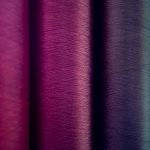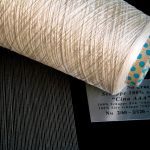
Silk Filament
Silk Yarn From Natural Filaments
After degumming the raw silk can be used as threads. Usually it is twisted and used for orgazine, trame or cordonnet.
Silk has a very high tenacity, which makes it very useful for technical applications and functional apparel.
raw white and dyed from 20/22 denier












